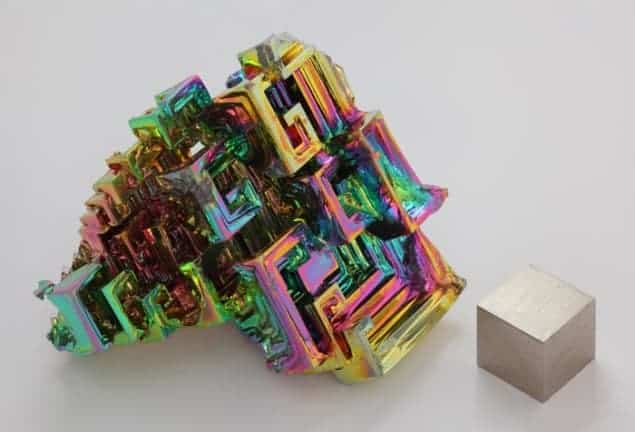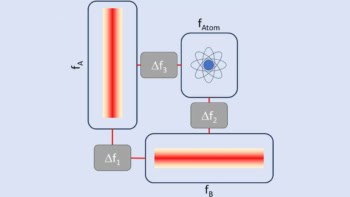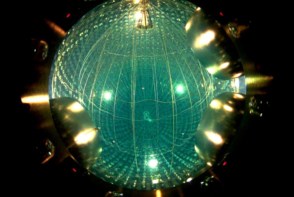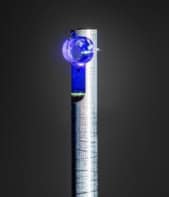
A new atomic clock that promises to be accurate to within 40 ms over the age of the universe has been proposed by physicists in the US and Australia. Based on a bismuth atom that has been stripped of 25 of its electrons, the clock could be used to look for variations in the fine-structure constant – according to its designers. The discovery of such variations could lead to a new unified theory of physics.
Today, the best clocks use an atomic transition as a time standard to measure time to an accuracy of about one part in 1017 – and physicists are keen on building even better timekeepers. A clock with an accuracy of one part in 1019 could help reveal minuscule changes in the values of fundamental physical constants such as the fine-structure constant. This parameter characterizes the strength of the electromagnetic interaction and detecting possible variations could help solve the biggest mystery of physics – how to formulate a single unified theory that describes the four fundamental forces: gravity, electromagnetism and the strong and weak nuclear forces.
In March 2012, a team led by Corey Campbell at the Georgia Institute of Technology argued that the required level of precision could be attained by using a particular nuclear transition in the thorium-229 ion with a charge of 3+. However a practical clock is unlikely because there are two problems with the scheme. The first problem is that the exact frequency of the thorium-229 transition is extremely difficult to calculate and therefore a great deal of time and effort could be spent in the lab just searching for the transition. The second problem is that thorium-229 is radioactive, making it difficult to work with.
Highly charged solution
Now three of Campbell’s collaborators have proposed what could be a more practical way to reach this level of precision using highly charged ions. Andrei Derevianko of the University of Nevada in Reno and Vladimir Dzuba and Victor Flambaum of the University of New South Wales in Sydney, looked at traditional atomic clocks to see if their errors could be brought down to the level of the nuclear clock.
Today, the most accurate current atomic clocks use aluminium ions (Al+) in an electromagnetic trap. However, stray fields can exist in the trap and these perturb the energy levels of the ion – reducing the performance of the clock. Derevianko and colleagues reasoned that as more and more electrons were stripped away from the ion the remaining electrons would be pulled closer to the nucleus and stray fields would have a less detrimental effect on performance.
The researchers calculated, therefore, that observing a specific electronic transition in a bismuth-209 ion (209Bi25+) would allow them to reach the required accuracy level. Like the aforementioned nuclear transition, this transition has not yet been observed. Derevianko explains, however, that, in stark contrast to the nuclear-structure calculations required to locate the nuclear transition, electronic-structure calculations are far more reliable and so the transition’s location can be predicted with much greater accuracy. Furthermore, bismuth-209 has a half-life of greater than 10 billion billion years – so can be considered non-radioactive.
New technology, new challenges
While such a clock would be difficult to build, the trio argue that it should be possible. “It is much harder to trap and cool highly charged ions,” explains Flambaum, “It is a new technique that has just started to appear. But people do this – it is not like our proposal just appeared out of the blue. It is just a new technology that requires new installations. It was much easier to work with neutral atoms or singly ionized atoms so of course people started from this, but now the time has come to search for other opportunities.”
Helen Margolis, an atomic-clock expert at the National Physical Laboratory in Teddington, is intrigued by the proposal but believes that it will pose numerous challenges before it can be experimentally implemented. “People are very clever at dreaming up new ways to do things,” she says, “but working on highly charged ions of this type is certainly not easy and they would need to do a lot of things that have never been done before.”
In particular, she does not share Derevianko’s confidence that the researchers’ calculations can reliably predict the location of the relevant transition. “It is true that for the highly charged ion clock the calculations of where these transitions occur are probably better,” she says, “but they are still not accurate enough to make the search for these transitions easy.”
The research is published in Physical Review Letters.



